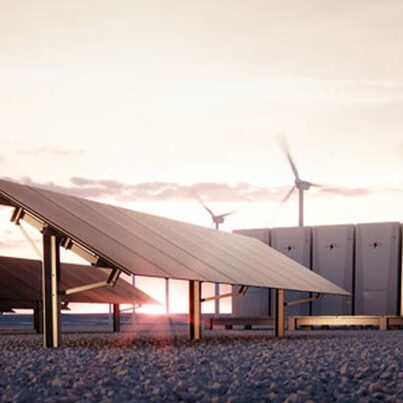Ten years ago, it would have been hard to see a world where renewable energy would represent 20% of power generation in the US.1 But the grid reached this level in 2021, with over 310 gigawatts of renewables capacity deployed.2 This broad expansion of renewable power production has also sparked rapid growth in the battery storage space, which is quickly emerging as an essential component of continuous energy distribution.
Battery storage developers, and project owners like Greenenergyglobe, are able to capitalize on multiple revenue models—as well as several incentive programs—to maximize returns. This applies to energy storage projects that act in concert with renewable generation or on their own to help stabilize the grid.
Revenue models for battery storage
Co-located solar and storage – The most common market use case for power storage is to pair a battery with a solar plant, enabling a utility or commercial customer to dispatch power when needed or when most economically favorable. The storage project receives a fixed payment on a per megawatt-hour (MWh) basis, with contract tenors ranging from 10 to 20 years.
Tolling agreements – Similar to wind and solar energy contracts, standalone storage projects enjoy long-term purchase agreements, called tolling agreements, that provide stable cash flows to the projects in exchange for a certain number of charging/discharging cycles per day. Contracts are structured similarly to co-located projects, on a fixed MWh basis for a tenor of 10 to 20 years.
Frequency regulation – Under a frequency regulation service arrangement, storage projects respond to grid requests to provide immediate power to maintain generation-load balance on the grid and prevent frequency fluctuations. The US grid uses alternating current that must be kept within tight frequency bounds (around 60 Hz); if electricity demand increases suddenly, it can cause grid frequency to fall, while excess power supply can cause a frequency jump. Grid operators compensate battery providers in the form of a fixed payment to absorb or discharge excess electricity to maintain grid stability.
Capacity payments – Storage projects are also eligible to participate in wholesale electricity markets such as capacity markets, where generators are compensated by the grid operator in exchange for delivering generation when requested. Capacity prices are set on a one- to three-year basis, and are based on the value the grid ascribes to their contribution to the network or their eligible load carrying capacity. Select markets also have daily or monthly markets. In California, capacity market participation takes the form of a resource adequacy contract, as state regulations require that utilities ensure sufficient capacity to meet customer demand.
Energy arbitrage – In addition to the relatively stable cash flows generated by the agreements above, battery storage projects can also take advantage of charging and discharging electricity when it’s economically favorable to do so, selling into the wholesale electricity market and generating incremental revenue. In the short term, while the number of storage assets in the market is relatively low, this energy arbitrage revenue stream can be incredibly valuable to project economics, generating trading revenue to supplement core revenue.
Policy incentives for battery storage
Federal incentives – Added to solar projects, storage projects can currently recoup up to 30% of their investment by claiming the investment tax credit (ITC), which enables cost-competitive end-user pricing for storage and encourages increased adoption. Under the Build Back Better plan, standalone storage projects will also be able to claim the ITC, providing further support to the sector.
State incentives – States like California, New York, and Illinois have announced large procurement programs for co-located and standalone batteries to accelerate the transition to an electricity-based economy and reduce the near-term strain on the grid. For the longer term, states are already gearing up to invest in transmission to accommodate additional new generation for a decarbonized economy, with the California Independent System Operator (CAISO) alone signaling the need for over $30 billion of investment to develop transmission capacity over the next 20 years.3
The growth opportunity for storage
Storage is critical to achieving broader decarbonization goals and advancing towards an electric economy. Its central role in the clean energy transition means that investment opportunities will continue to expand as new technologies and market models emerge, creating multiple commercialization approaches as well as a compelling growth opportunity for investors.
1 Electricity in the United States, U.S. Energy Information Administration (EIA), February 2022.
2 Electricity Generation, Capacity, and Sales in the United States, EIA, February 2022.
3 20-Year Transmission Outlook, California ISO, January 31, 2022.

